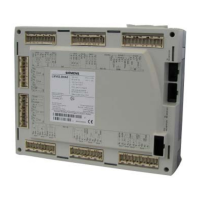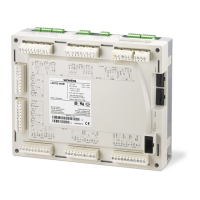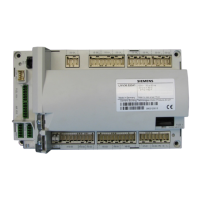LMV Series Technical Instructions
Document No. LV3-1000
SCC Inc. Page 7 Appendix A
Hot Standby on a Steam Boiler with an RWF55 (continued)
3. Set the following parameters in the RWF55 controller. For more information, obtain
Siemens Document No. U7867 for the RWF55 at www.scccombustion.com.
ConF > Cntr > CtYP = 2
ConF > Cntr > SPL = setpoint range lower limit
ConF > Cntr > SPH = setpoint range upper limit
OPr > SP1 = normal operation setpoint
PArA > HYS1 = burner on for normal operation (pressure-based)
PArA > HYS3 = burner off for normal operation (pressure-based)
ConF > InP > InP1 > SEn1 = pressure sensor type
ConF > InP > lnP1 > SCL1 = 0
ConF > InP > InP1 > SCH1 = high end of the range of the pressure sensor
ConF > InP > InP3 > SEn3 = temperature sensor type
ConF > Inp > Inp3 > dF3 = 0
ConF > AF > FnCt = 12
ConF > AF > AL = hot standby setpoint (temperature-based)
ConF > AF > HYSt = burner on / off for hot standby (temperature-based)
ConF > OutP > SiGn = 1
Operation
1. When the hot standby switch is set for hot standby, the LMV3 system is in hot standby
mode. The burner will turn on and off based on the temperature limits set in the
RWF55 controller for hot standby (ConF > AF). Since the signal to LMV3 terminal X64.1 is
broken by the hot standby switch, the LMV3 stays at low fire until the burner turns off
based on the burner off point set in the RWF55.
2. When the hot standby switch is set for normal operation, the system is in normal
operation mode and not in hot standby. The burner will turn on and off based on the
pressure limits set in the RWF55 controller for normal operation (PArA > HYS1 and PArA
> HYS3). The signal to LMV3 terminal X64.1 determines the firing rate of the burner.
Important Notes
1. An RWF55 controller must be used (not RWF50).
2. The RWF55 is operating as the load controller during normal operation as well as
controlling the hot standby.
